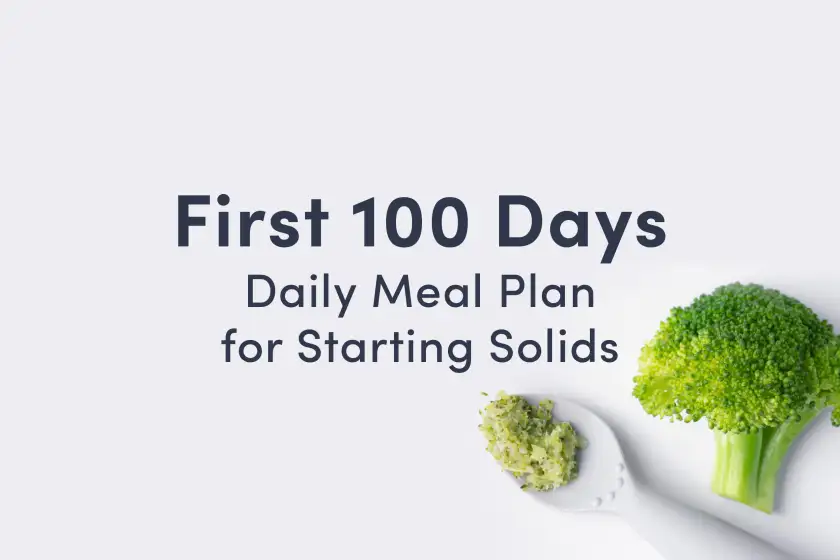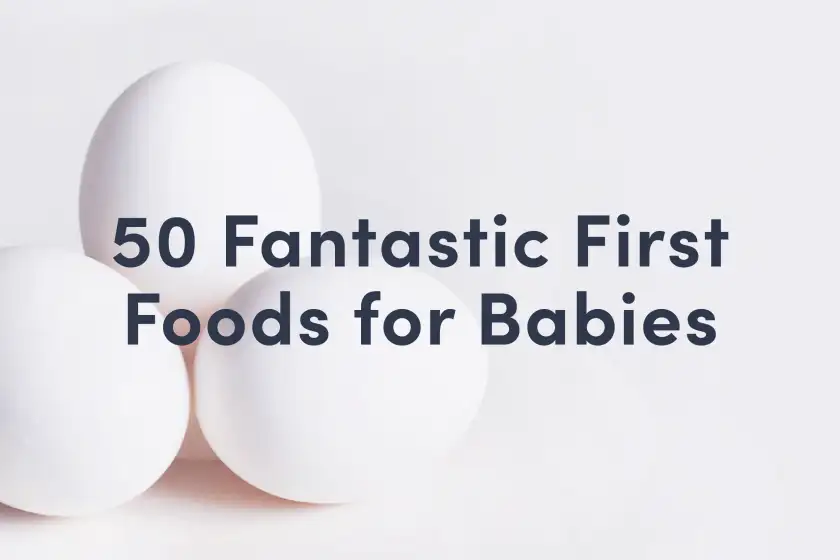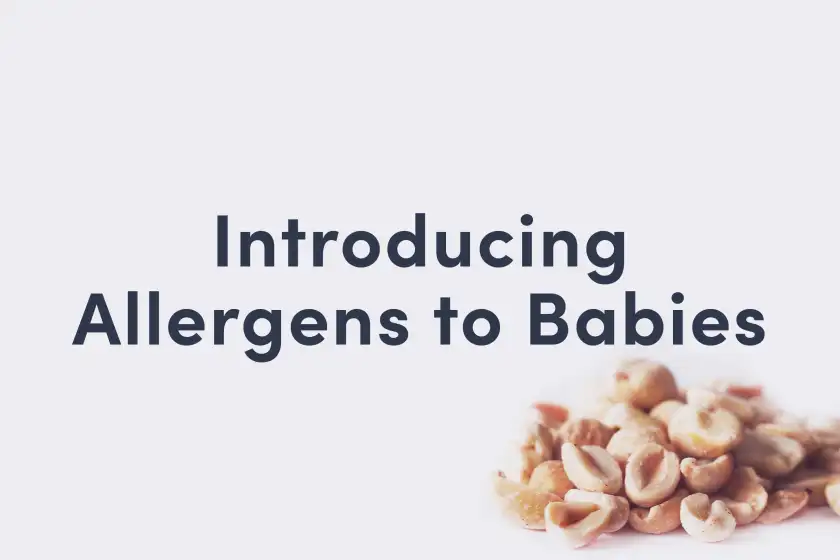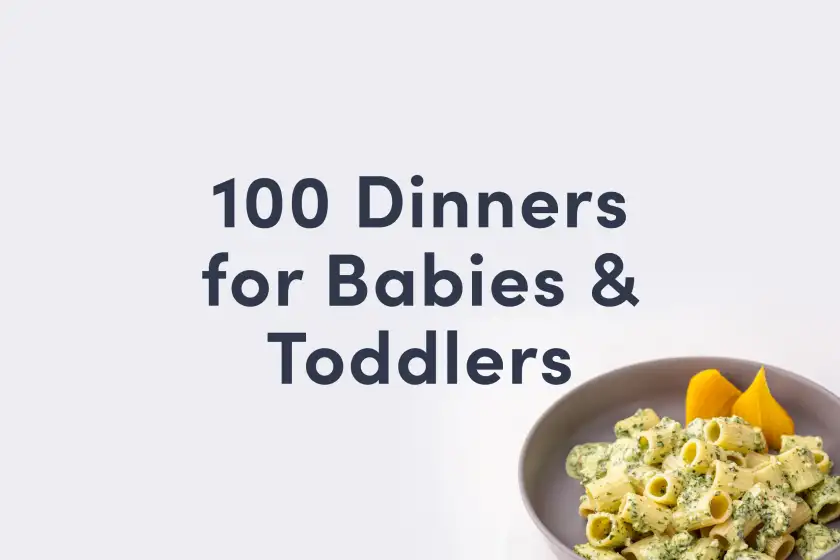Crackers
Grain
Age Suggestion
12 months
Iron-Rich
No
Common Allergen
Yes
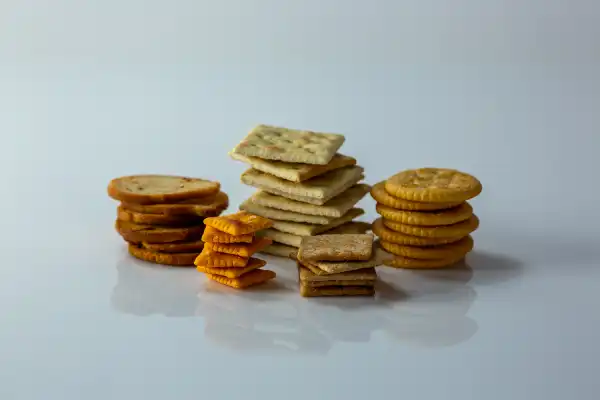
When can babies eat crackers?
It depends on the type. Because crackers are common choking hazards and tend to contain high amounts of sodium, it is best to wait until after the first birthday to share soft crackers (styles that melt in the mouth or easily crumble when gently pressed like Goldfish crackers, Ritz crackers, Saltines, and water biscuits, among others). Hard, brittle, or sharp crackers should be reserved for when a child has more advanced eating skills, typically around 24 months of age. Before serving any cracker to a baby or toddler, first make sure it is not stale, as the consistency of stale crackers can heighten the choking risk.
Note: Crackers often contain common allergens like dairy, egg, sesame, soy, tree nut, and wheat, and may contain honey, which should not be offered to babies under 12 months of age as it is associated with a risk of infant botulism.
Warning
Make sure to serve crackers in an age-appropriate way, as they are named as a potential choking hazard for babies and toddlers.
How are crackers made?
Crackers are consumed worldwide in many forms, such as crispbread, graham crackers, kropek (prawn crackers), matzah, oat cake, and papadum. Some are leavened with baking soda, while others are unleavened. Some cracker varieties are “docked” before baking, which means they are poked with holes so that they don’t puff up too much in the heat, helping them stay flat and crispy. Crackers can be made of almond flour, puffed rice, wheat flour, and much more. Many are served with a cheese or spread, while others are offered on the side of a meal for dipping.
Videos
Are crackers okay for babies?
It depends on the type. Teething rusks and other infant crackers and biscuits are generally safe, but offer very little nutritional value on their own. Consider serving infant crackers or biscuits with nutrient-dense spreads and dips to boost baby’s fat and nutrient intake.
Depending on the type, crackers can offer various B vitamins, folate, and a dash of iron into a toddler’s diet, and when they are made with whole grains, they can offer lots of fiber for digestive health. However, many crackers contain honey, which should not be offered to babies because it is associated with a risk of infant botulism.
Are crackers a common choking hazard for babies?
Yes. Crackers are a common choking hazard, and most styles are firm and sharp, which can make them more challenging to chew and more likely to scratch or poke a child’s mouth. To reduce the risk, serve age-appropriate styles of cracker to baby, make sure the crackers are not stale, and make sure the child is seated and focused while eating. As always, make sure you create a safe eating environment and stay within an arm’s reach of the child during meals. For more information on choking, visit our section on gagging and choking and familiarize yourself with the list of common choking hazards.
Do crackers contain common allergens?
Yes. Crackers are commonly made with wheat and other gluten-containing grains, and may contain other common allergens such as dairy, peanut, sesame, soy, tree nuts, and others. Read any ingredient label carefully before serving.
Prior to sharing crackers with baby, it is important to introduce common food allergens and rule out an allergy before serving those allergens together in a prepared food. This way, you’ll be able to identify which allergen is responsible if baby has a reaction. Then, when you are ready to offer crackers, you will be confident that the child has already safely eaten any common food allergens in the food.
As you would when introducing any new food, start by offering a small quantity for the first few servings. If there is no adverse reaction, gradually increase the quantity over future meals.
When can babies eat puffed rice cakes?
Hold off on serving thicker-style puffed rice cakes until 18 months of age and the child has more mature eating skills. That said, babies can have thin-style puffed rice cakes as soon as they are developmentally ready for solids, around 6 months of age, since these soften readily on contact with saliva, which reduces choking risk. When possible, look for thin, soft multi-grain cakes. Note that any kind of puffed rice cake can become more challenging to eat when stale.
Can crackers help babies poop?
No. In general, crackers tend to be low in fiber, which slows the processes of digestion and pooping. Remember that pooping patterns can vary significantly from baby to baby. If you have concerns about baby’s pooping and digestive function, talk to your pediatric healthcare provider.
How do you introduce crackers to babies with baby-led weaning?
Every baby develops on their own timeline, and the suggestions on how to cut or prepare particular foods are generalizations for a broad audience.
6 to 11 months old:
Opt for teething rusks and other styles of crackers or biscuits that are made for infants, and avoid crackers that are harder, sharper, or very high in sodium. Infant crackers are safer for babies because they are thin, lack sharp edges, and tend to melt in the mouth as baby eats. Make sure that they are not stale, as the consistency of stale crackers can change and become more challenging. You can also offer thin-style puffed rice cakes, but hold off on thick rice cakes until baby is older, as they pose a higher choking risk. Consider serving infant crackers with nutrient-dense dips or spreads such as mashed avocado, hummus, or pureed beans to boost baby’s nutrient intake. Hold off on serving other styles of cracker at this age due to choking risk.
12 months old+:
Serve soft crackers that do not have sharp edges and soften on contact with saliva. These include cream crackers, oyster crackers, papadam, and water biscuits, among others. Crackers in the style of Goldfish crackers, Ritz crackers, and Saltines also work for this age. Some crackers can be quite high in sodium, so aim to serve these in moderation. Hold off on serving hard, brittle crackers and biscuits with sharp edges at this age due to the choking risk.
24 months old+:
Serve soft crackers like cream crackers, papadam, water biscuits, crackers in the style of Ritz, Saltines, and Goldfish, and others that melt in the mouth to minimize the risk of choking. Many toddlers enjoy dipping, so consider serving crackers with a dip. Wait to offer hard crackers with sharp edges like bagel chips, tortilla chips, Triscuit crackers, Wheat Thin crackers, and others until the toddler has developed more mature eating skills (including taking manageable bites, thoroughly chewing food, and safely swallowing). Make sure the child is seated in a safe eating environment, as eating while distracted, talking, running, or playing greatly increases choking risk.
Toddler demanding only crackers and snacks? See our guide on Toddler Food Refusal.
Written by
Expert Tips Delivered to Your Inbox
Sign up for weekly tips, recipes and more!
The content offered on SolidStarts.com is for informational purposes only. Solidstarts is not engaged in rendering professional advice, whether medical or otherwise, to individual users or their children or families. No content on this site, regardless of date, should ever be used as a substitute for direct medical advice from your doctor or your medical or health professional, nutritionist, or expert in pediatric feeding and eating. By accessing the content on SolidStarts.com, you acknowledge and agree that you are accepting the responsibility for your child’s health and well-being. In return for providing you with an array of content “baby-led weaning” information, you waive any claims that you or your child may have as a result of utilizing the content on SolidStarts.com.



